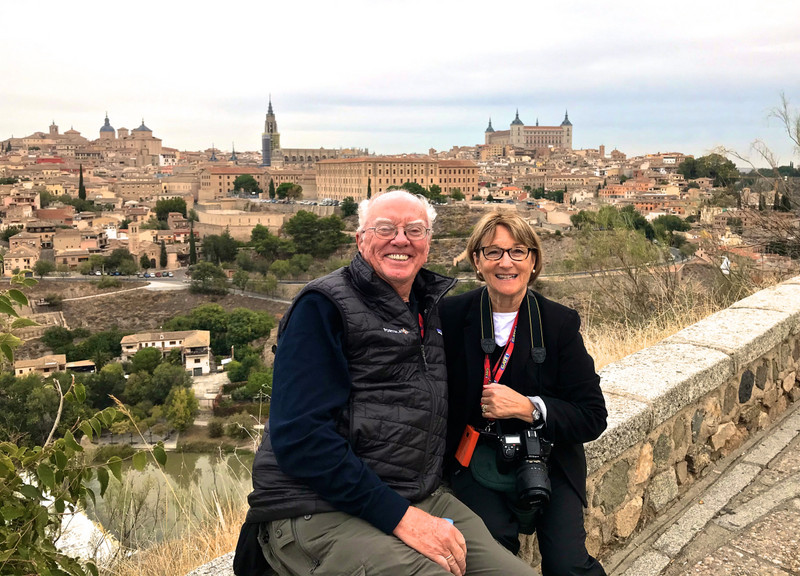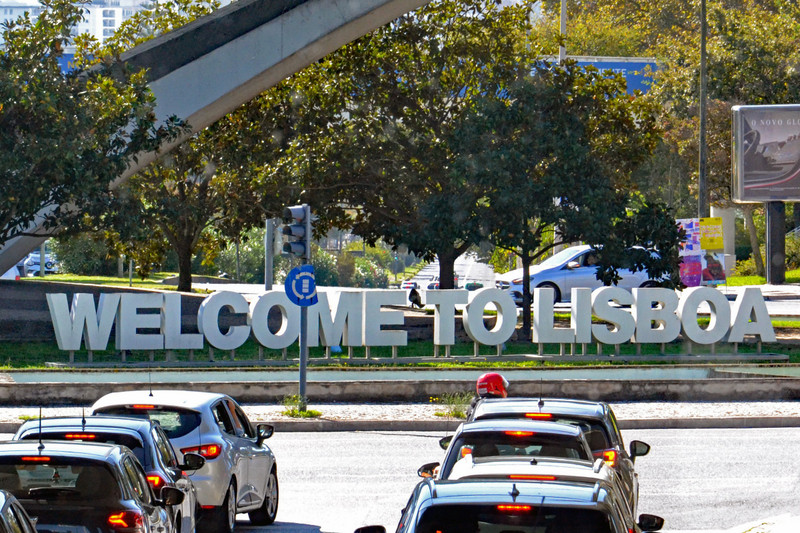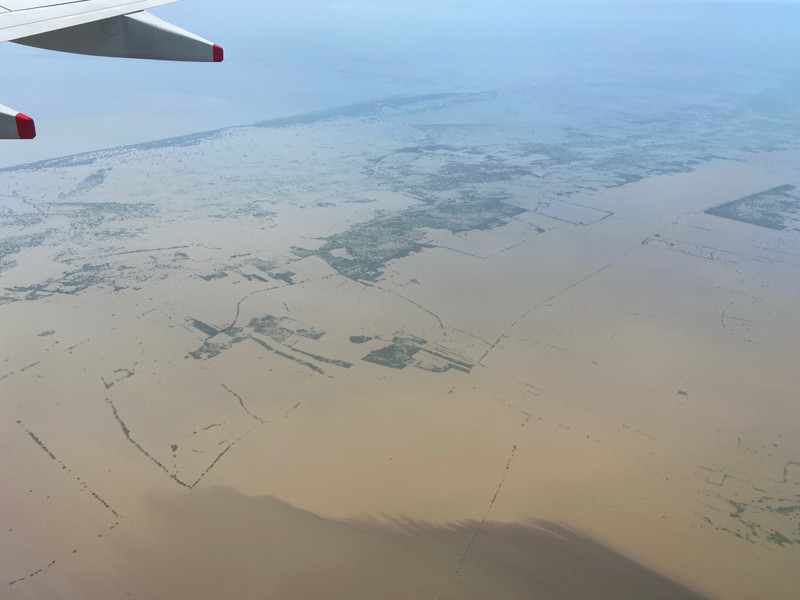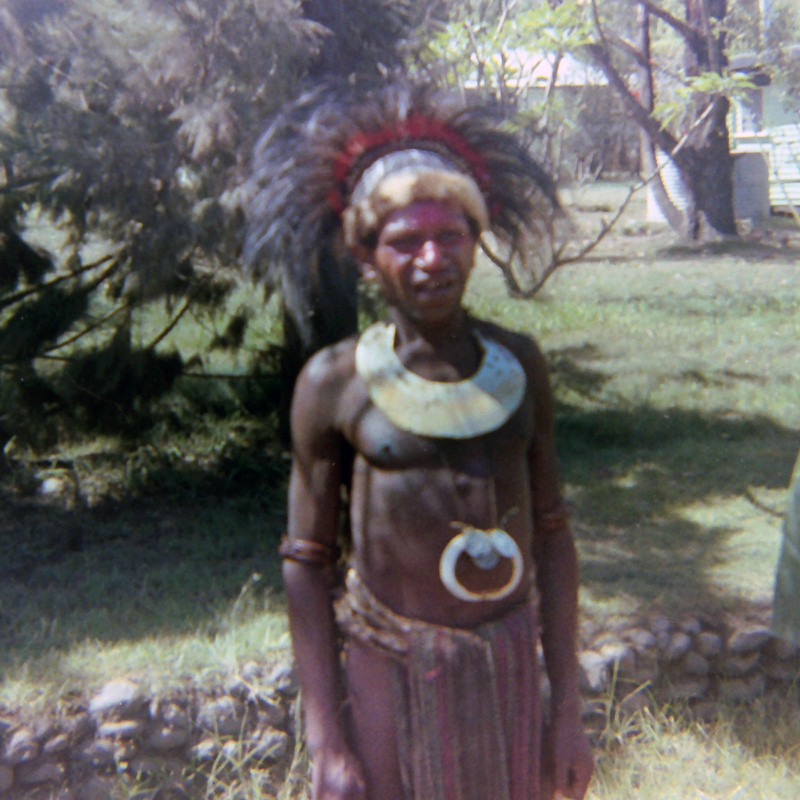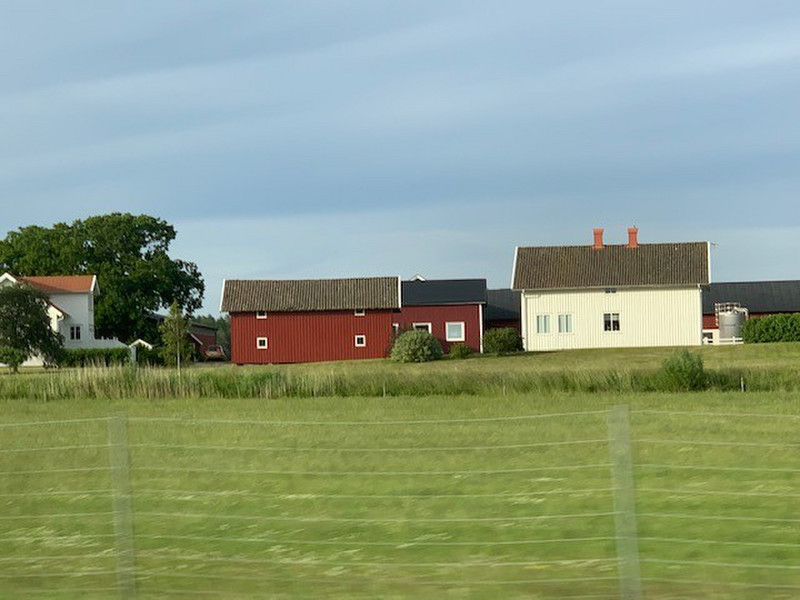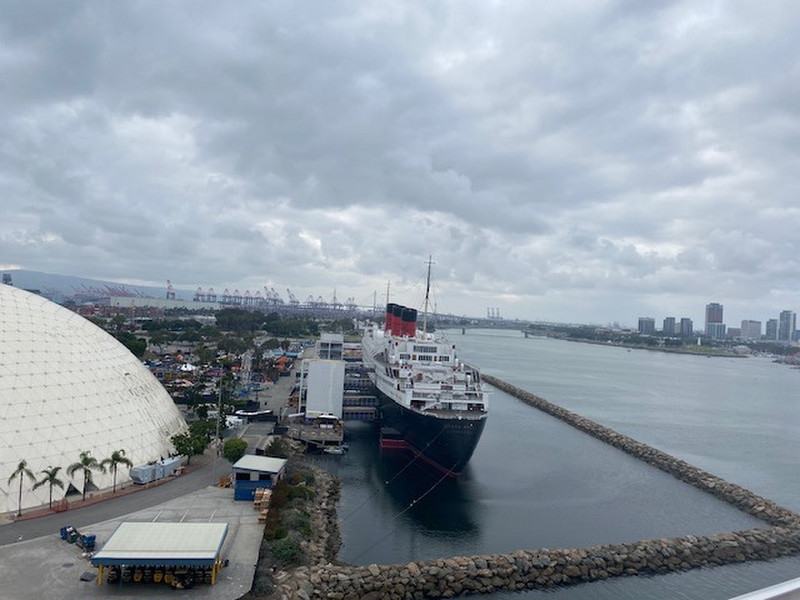After our last amazing breakfast in Madrid we were on the bus by 8:30am and headed to the city of Toledo in Mancha, an hour south of Madrid, passing large old homes and almond and olive groves. As we approached the first vista of Toledo, our bus had to jockey into position among the numerous other tourist buses so we might get out and get our first glimpse of ancient Toledo across from the Tajo River. This first glimpse of Toledo is the same view of Toledo painted by El Greco, which is why every tour bus was in line to stop here. Its natural moat explains why Toledo, which means top of the hill, was the first capital city of Spain before the capital was moved to Madrid in 1652. Under cloudy skies that threatened rain we ran to get spots that were perfect for our first photo op of the day. Despite the damp chill it was an impressive vista.
To enter Toledo we crossed the medieval Puente de San Martin or St Martins Bridge, spanning the Tagus (Tajo) River into the old city that was built by Romans by Arabs, becoming
one of the most powerful cities in Europe during the Middle Ages. At 2,500 years old, the city of Toledo is remarkably well preserved, perhaps because Spain declared it a national monument. There is a legend that the bridges architect had made a perilous miscalculation in the construction of the bridge that would cause it to collapse with him on it, disgracing the architect. He went home and told his wife about his mistake and in the middle of the night she started a fire that destroyed the bridge, allowing her husband to rebuild the bridge and save face. Again, the woman behind the man.
Toledo, we discovered, is a beautiful UNESCO World Heritage Site founded by the Romans, and influenced by the the Moors and Jews who came later. Cultural diversity seems embedded in the very stones it is built upon clearly visible in its blend of Gothic and Renaissance architecture. The uniquely harmonious made it is easy to understand why Toledo is known as the City of Three Cultures.
We began our walking tour through a maze of ancient narrow streets and up a steep hill that ended in the large Plaza de Zocodover,
also known as Plaza Mayor, where we could catch our breath, be tempted by Toledos famous mazapan and imagine what it was like here when the bullfights took place. I have enjoyed the delicious almond sweets called marzipan in Italy, Estonia and Germany but here the mazapan, is made with almonds, sugar, eggs and honey. I think the honey brings on a new flavor stuffed inside sweet pastry dough, but to me it was not as sweet. We learned that mazapan is made and eaten in Toledo to other regions in Spain and Europe where marzipan is mostly eaten around the Christmas or Easter holidays. Dave and I went to Santo Tome on the plaza and bought some of their small mazapan and a larger fish pastry stuffed with the sweet stuff for later. I did see some of the more familiar colored marzipan in shapes that resemble fruits but we did not try those. I wish I had because I prefer the intense flavor of the marzipan rather than having it diluted by dough.
We wound our way into the history of Toledos medieval past through a mire of narrow and confusing streets, that without
a map, I became totally confused. In the days before the Inquisition, Catholic Christians, Iberian Jews and Moorish Muslims lived together in mutual respect and harmony and as the narrow cobbled paths took us past ancient churches, synagogues, palaces, mosques and fortresses I felt thrilled to be walking on these historic stones thinking of a time when people coexisted in harmony. We passed the de El Salvador, a twelfth century church built on an eleventh century Taifa mosque that turned into a Visigothic building. The current church is still oriented in the direction of Mecca. From here our guided pointed to the Church of San Miguel, a Mudejar church founded by the Knights Templar, closer to the Tajo River.
